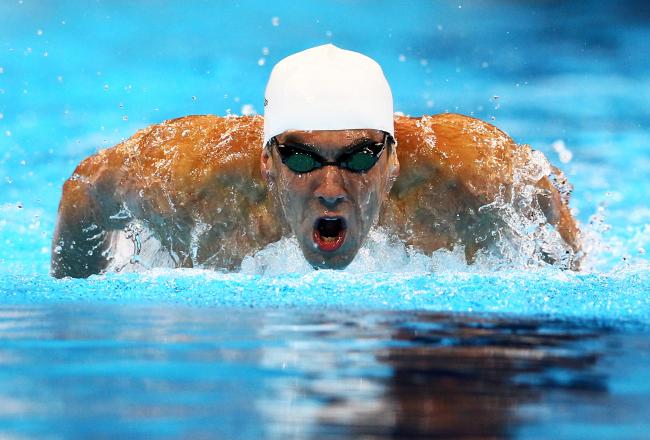Why? The problem, if you're new to the study of sex and gender, is that there's no universal standard for what makes a woman a woman. According to New Scientist, the Olympics actually uses several experts from several fields, each with their own measures and definitions: "an endocrinologist, a gynaecologist, an internal medicine expert, an expert on gender and a psychologist". Obviously, then, it's not surprising that the system eventually broken down for lack of a single, satisfactory definition.
(International sport doesn't actually care if someone who's competing as a man is a woman, or if a man is a mutant, for that matter. Michael Phelps is an evolutionary wunderkind who would probably fail his sex test if he were a woman, if only because his body deviates so significantly from human norms that those deviations are bound to overlap with stuff we usually associate with sex characteristics. But he's not a woman, so no one cares how his natural ability to not create lactic acid impacts his sex.)
 |
| Is he a man? (Or is he a muppet? A muppet of a man?) Photo by Al Bello/Getty. |
Now, that's not to say that sex-testing doesn't still happen - it does, and a few Olympic athletes have quietly failed their tests since 1996. But there's no more pretending that a single test (or even a series of tests) can adequately address the variety of sexes offered by human beings.
But that system, and its problems, only really came to light - and blew up - when Caster Semenya became a lightning rod for the discussion in 2009. You might remember her as the World Champion long-distance runner who, it was suspected, might "actually" be a man. Officially, the International Association of Athletics Federation (IAAF) was concerned that she might have a "rare medical condition" that gave her an unfair advantage. Nice euphemism.
(Returning to Phelps, again - strangely, no one has ever suggested that his "rare medical condition" is unfair, have they? And furthermore, don't you kinda have to have a "rare condition" of some physical sort or another in order to become an elite athlete in the first place? It's not like Usain Bolt is that fast only because he trains harder than everyone else, y'know?)
Athletics South Africa (ASA) would later admit that they had administered a sex-test without Semenya's knowledge. (And subsequently suppressed the results!) And the IAAF eventually agreed that Semenya's World Championship would stand, but said nothing about whether she would still qualify as a woman for future events. (At least, not until the next World Championship was nearly upon them.) Or, for that matter, what defined "woman" for their purposes.
 |
| Caster Semenya in 2010. Photo by Erik van Leeuwen. |
Getting back to my gender class, though - recently, and in response to the whole Semenya thing, I've been telling my students that most sports orgs have acknowledged the problems inherent in sex-testing and dropped the tests altogether. And that's kind of true. (There have been allusions to "secret" investigations. Obviously, I can't say much about something that may or may not exist, and that no one is talking about regardless.) But what's happened, and it seems that no one really knew until a few weeks ago, is that sex-testing has reappeared in a new and unexpectedly backward way.
Given that they can't effectively police the borderlands between male and female, this year's Olympics will police one specific element of their bodies: their testosterone levels. From the Toronto Star:
recent rule changes by the International Association of Athletics Federations (IAAF), the governing body of track and field, state that for a woman to compete, her testosterone must not exceed the male threshold. If it does, she must have surgery or receive hormone therapy prescribed by an expert IAAF medical panel and submit to regular monitoring.
What. The. Fuck. Hormone therapy? "The male threshold"? Who decides what that "threshold" is, anyway? And if we can't define male, how do we even begin to go about defining its threshold level? I'm not sure if this is lunacy or idiocy.
“What’s been going on here, for over 50 years now, has been an attempt to modify and refine the rules so as to be fair but also to be scientifically accurate and appropriate,” says [IAAF endocrinologist Dr. Myron] Genel. “We’ll get it right.”
And as long as they think there's a "right" test out there, somewhere, we can be certain that they'll continue to get it wrong.
One last quote from the Toronto Star article, this one from Bruce Kidd, a Canadian sports policy adviser who links the needs to define "real woman" with some very old politics and opinions:
“It’s still the old patriarchal fear, or doubt, that women can do outstanding athletic performances. If they do, they can’t be real women. It’s that clear, it’s that prejudicial,”

No comments:
Post a Comment